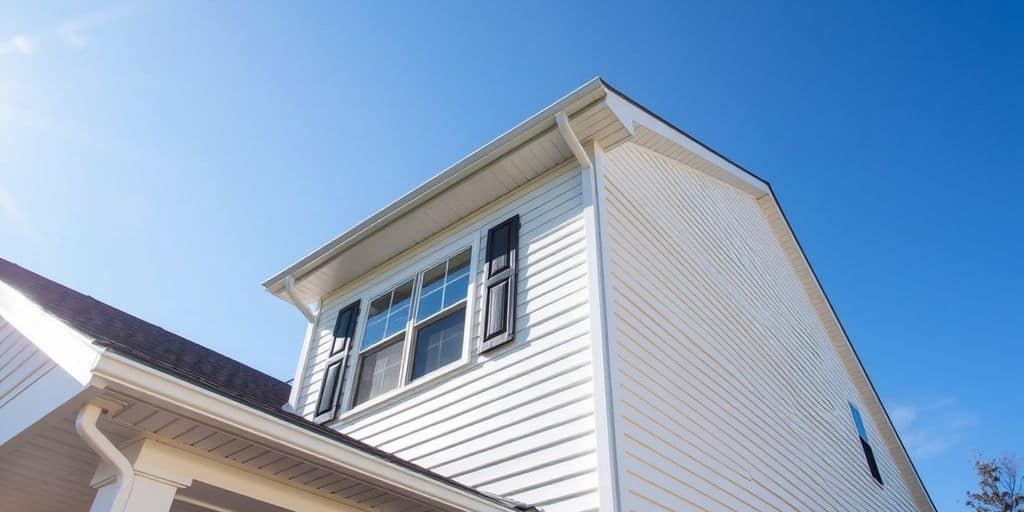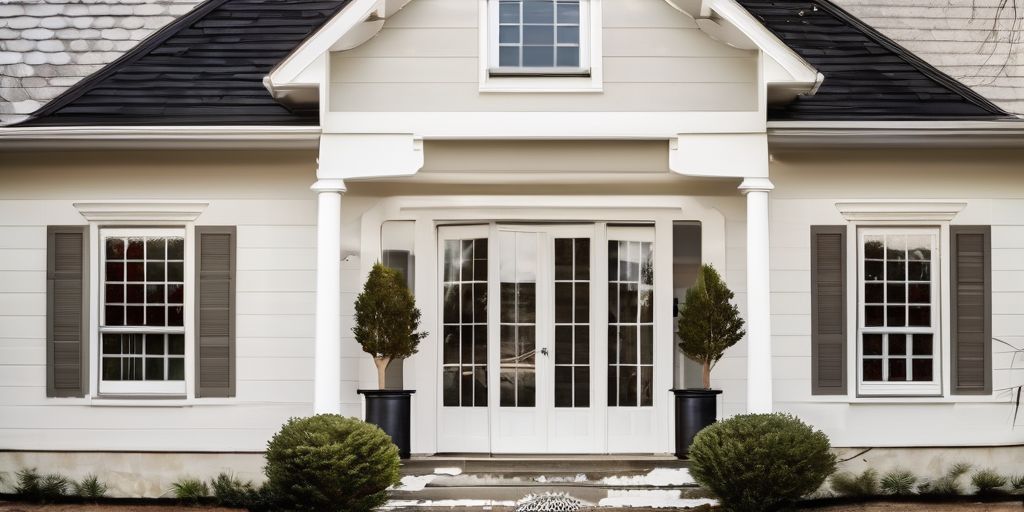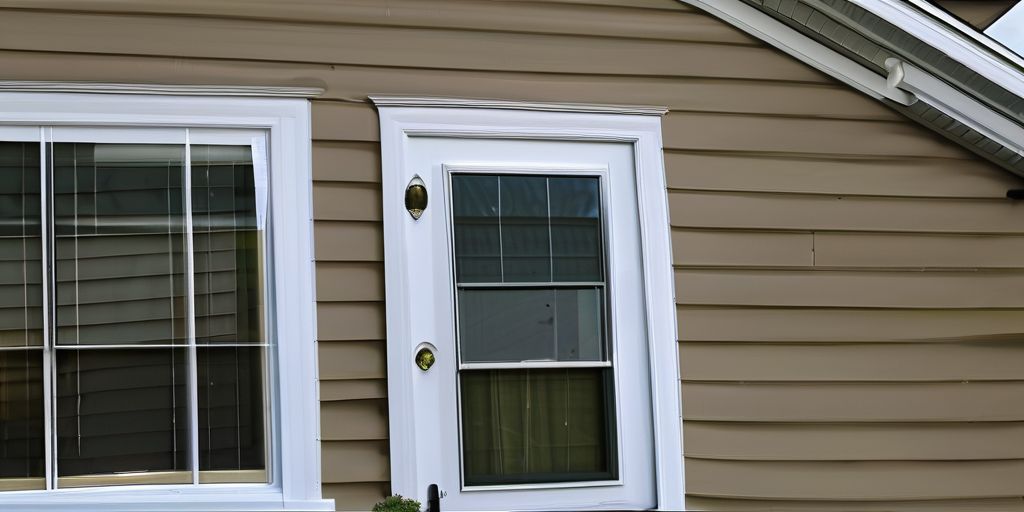Painting vinyl siding in Brantford requires careful planning due to the unique climate conditions. To achieve a beautiful and durable finish, it’s important to consider the best times of year to paint, the right materials to use, and how to prepare your home. This guide will help you navigate the process and ensure your painting project is a success.
Key Takeaways
- Understand Brantford’s climate to choose the best time for painting vinyl siding.
- Spring and fall are generally the best seasons for painting due to mild temperatures and low humidity.
- Use heat-resistant paints for summer and cold-weather paints for winter to ensure durability.
- Proper surface preparation, including cleaning and priming, is crucial for a long-lasting paint job.
- Consult with local painting experts to avoid common mistakes and select the best products for Brantford’s climate.
Understanding Brantford’s Climate for Optimal Painting
Seasonal Weather Patterns and Their Impact
Brantford experiences a variety of weather patterns throughout the year, which can significantly affect painting projects. Understanding these patterns is crucial for achieving the best results.
- Spring: Mild temperatures and moderate humidity make it an ideal time for painting.
- Summer: High temperatures and humidity can cause paint to dry too quickly or not adhere properly.
- Fall: Stable weather conditions with cooler temperatures and lower humidity are perfect for painting.
- Winter: Cold temperatures and snow make it a challenging time for painting.
Temperature and Humidity Considerations
Temperature and humidity are key factors to consider when planning a painting project in Brantford. The ideal temperature range for painting is between 50°F and 85°F, with humidity levels below 70%.
- High temperatures can cause paint to dry too quickly, leading to imperfections.
- Low temperatures can prevent paint from drying properly, resulting in a poor finish.
- High humidity can cause paint to bubble or peel.
- Low humidity is ideal for paint adhesion and drying.
Projected Climate Changes
Climate change is expected to bring more extreme weather conditions to Brantford, which can impact painting projects. By 2050, the number of hot days is projected to increase, and the frequency of severe storms is expected to rise.
| Year | Avg. Temperature (°F) | # Hot Days | # Severe Storms |
|---|---|---|---|
| Past | 88 | 7 | 11 |
| 2050 | 95 | 33 | 14 |
It’s essential to monitor local weather forecasts and plan painting projects during periods of mild weather to ensure optimal application and drying conditions.
By understanding Brantford’s climate and planning accordingly, you can achieve a long-lasting and aesthetically pleasing paint job.
Best Seasons for Painting Vinyl Siding in Brantford
Painting vinyl siding in Brantford requires careful planning to align with the city’s unique weather patterns. Here’s a breakdown of the best seasons to tackle this project.
Spring: Mild Temperatures and Low Humidity
Spring is an ideal time for painting vinyl siding. The temperatures are mild, usually ranging between 50°F and 70°F, which is perfect for paint adhesion. Additionally, humidity levels are generally lower, reducing the risk of paint bubbling or peeling.
Advantages of Spring Painting:
- Mild temperatures
- Low humidity
- Longer daylight hours
Summer: Early Mornings and Late Evenings
Summer can be tricky due to high temperatures, but painting during early mornings or late evenings can mitigate this issue. Avoid painting during the peak heat of the day to prevent the paint from drying too quickly and causing cracks.
Tips for Summer Painting:
- Paint in early mornings or late evenings
- Use quick-drying paints
- Stay hydrated and take breaks
Fall: Stable Weather Conditions
Fall offers stable weather conditions, making it another excellent season for painting. The temperatures are cooler, and humidity levels are moderate, providing an optimal environment for paint to cure properly.
Benefits of Fall Painting:
- Stable temperatures
- Moderate humidity
- Less chance of rain
Remember, the goal is to align painting activities with Brantford’s unique weather patterns and environmental considerations, ensuring a result that is both aesthetically pleasing and long-lasting.
Choosing the Right Paint and Tools
Heat-Resistant Paints for Summer
When painting vinyl siding during the summer, it’s crucial to select heat-resistant paints. These paints are designed to withstand high temperatures and prevent peeling or fading. Choosing the right type of paint ensures that your home remains beautiful and protected even during the hottest months. Look for paints that offer UV protection to keep colors vibrant.
Cold-Weather Paints for Winter
For those who need to paint during the colder months, cold-weather paints are essential. These paints are formulated to cure properly even in low temperatures, ensuring a durable finish. Temperature and humidity can significantly impact the paint’s performance, so it’s important to choose a product specifically designed for winter conditions.
Essential Tools for Each Season
Having the right tools can make a big difference in the quality of your paint job. Here are some essential tools for each season:
- Summer: Use paint sprayers for quick and even application, especially on large surfaces. Mini foam rollers are great for touch-ups and smaller sections.
- Winter: Brushes with synthetic bristles work well in cold weather as they maintain their shape and flexibility. Heated paint rollers can also be useful for ensuring smooth application.
- Spring and Fall: These seasons offer more stable weather conditions, so standard brushes and rollers are usually sufficient. However, always keep an eye on the weather forecast to avoid unexpected rain or temperature drops.
Proper preparation and the right tools can make your painting project much easier and more successful.
By understanding the impact of climate on painting vinyl siding, you can make informed decisions that will help maintain your home’s aesthetic and structural integrity.
Preparing Your Home for Painting
Cleaning and Repairing Surfaces
Before you start painting, it’s crucial to clean and repair the surfaces. Thoroughly cleaning the vinyl siding ensures that the paint adheres properly. Here are some steps to follow:
- Wash the siding with a mild detergent and water.
- Use a soft brush to scrub away dirt and mildew.
- Rinse thoroughly with a garden hose.
- Inspect for any damage, such as cracks or holes, and repair them.
Priming for Better Adhesion
Priming is an essential step to ensure the paint sticks well and lasts longer. Choose a primer that is suitable for vinyl siding. Apply the primer evenly and let it dry completely before painting. Remember, primers can take up to 3 hours to dry in humid conditions.
Safety Measures During Preparation
Safety should always be a priority when preparing your home for painting. Here are some tips to keep in mind:
- Wear protective gear, such as gloves and safety glasses.
- Use a sturdy ladder and ensure it is on a stable surface.
- Keep children and pets away from the work area.
- Be cautious when working near electrical outlets and wires.
Taking the time to properly prepare your home will make the painting process smoother and more effective.
By following these steps, you can ensure that your painting project will be successful and your home will look great for years to come.
Tips from Local Painting Experts
Adapting Techniques to Seasonal Changes
Local experts emphasize the importance of adjusting painting techniques to match the season. For instance, in the summer, it’s best to paint during the early morning or late evening to avoid direct sunlight, which can cause the paint to dry too quickly. In the fall, the stable weather conditions make it an ideal time for painting, but be mindful of falling leaves that can stick to wet paint.
Common Mistakes to Avoid
Avoiding common mistakes can save you time and money. Here are some tips:
- Skipping surface preparation: Always clean and repair surfaces before painting.
- Ignoring weather forecasts: Use reliable weather tools to monitor conditions and be prepared to delay if rain or extreme weather is forecasted.
- Using the wrong type of paint: Choose paints that are suitable for the current weather conditions.
Recommended Products and Brands
While specific brands can’t be mentioned, local experts recommend using high-quality, weather-resistant paints. These products are designed to withstand Brantford’s unique climate, ensuring a long-lasting and attractive finish. Additionally, investing in good brushes and rollers can make a significant difference in the final result.
Remember, the key to a successful painting project is preparation and timing. By following these expert tips, you can achieve a beautiful and durable finish for your home exterior.
Scheduling and Planning Your Painting Project
Monitoring Weather Forecasts
It’s essential to monitor the weather forecast and plan your painting project accordingly to ensure optimal conditions for paint application and drying. In Brantford, where the local mean temperature has been on the rise, the window for painting is shifting. This requires painters to adapt more quickly to the changing conditions to achieve long-lasting results. Understanding the local climate trends is crucial for scheduling your painting projects to avoid the extremes of sweltering summers and freezing winters.
Creating a Flexible Timeline
When planning your painting project, it’s important to create a flexible timeline. Weather can be unpredictable, so having a buffer in your schedule can help accommodate any unexpected changes. Here are some tips for creating a flexible timeline:
- Plan for delays: Account for potential weather-related delays in your schedule.
- Prioritize tasks: Focus on tasks that can be completed regardless of weather conditions.
- Stay informed: Regularly check weather forecasts and adjust your timeline as needed.
Booking Professional Services in Advance
Booking professional painting services in advance is crucial, especially during peak seasons. Painters often have busy schedules, so securing your spot early can ensure your project is completed on time. Consider the following when booking services:
- Research local painters: Look for experienced painters familiar with Brantford’s climate.
- Schedule consultations: Meet with potential painters to discuss your project and timeline.
- Confirm availability: Ensure the painter you choose is available during your preferred timeframe.
Remember, the goal is to align painting activities with Brantford’s unique weather patterns and environmental considerations, ensuring a result that is both aesthetically pleasing and long-lasting.
Planning and scheduling your painting project doesn’t have to be a hassle. With our expert team, you can easily transform your home’s exterior without the stress. Visit our website to learn more about our services and book a free estimate today!
Conclusion
In Brantford, painting your vinyl siding at the right time is key to making it look great and last long. By paying attention to the local weather, you can avoid problems like paint peeling or not sticking well. The best times to paint are in late spring and early fall when the weather is mild and dry. Planning ahead and picking the right days can make a big difference. So, keep an eye on the forecast, choose your days wisely, and happy painting!
Frequently Asked Questions
When is the best time to paint vinyl siding in Brantford?
The best times to paint vinyl siding in Brantford are late spring and early fall. During these seasons, temperatures are mild, and humidity is lower, which helps the paint adhere better and dry properly.
How does Brantford’s climate affect painting projects?
Brantford’s climate, with its hot summers and cold winters, can impact drying times and how well paint sticks to surfaces. It’s important to choose days with mild weather to get the best results.
Why should I avoid painting in the summer heat?
High temperatures in summer can cause paint to dry too quickly, which can lead to cracks and an uneven finish. It’s better to paint during the cooler parts of the day, like early morning or late evening.
What kind of paint should I use for cold weather?
For cold weather, it’s best to use paints that are specially made for low temperatures. These paints are designed to adhere well and cure properly even when it’s chilly outside.
Do I need to clean my siding before painting?
Yes, cleaning your siding before painting is essential. Dirt, grime, and mildew can prevent paint from sticking properly. Use a mild detergent and a soft brush to clean the surface thoroughly.
How can I prepare for unexpected weather changes during a painting project?
Always check the weather forecast before starting your project. Try to plan your painting on days when no rain or extreme weather is expected. Having a flexible timeline can also help you adjust to sudden weather changes.





